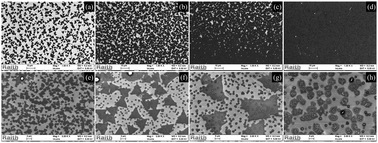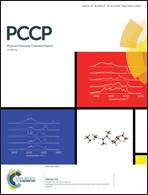Temperature dependence of phonon properties in CVD MoS2 nanostructures – a statistical approach†
Abstract
In this paper, we report the results of Raman measurements on various molybdenum disulfide (MoS2) nanostructures grown by the chemical vapor deposition (CVD) method on a typical Si/SiO2 substrate. The phonon properties investigated include the positions, widths, and intensities of the E2g and A1g modes and the derivative of the mode positions with respect to the temperature in the 300–460 K range. Our results give new insight into changes in phonon energies in response to different disturbances and show that changes induced by the temperature are similar to the changes induced by stress, making these two factors hardly resolvable in the ħωA1g–ħωE2g coordinate system. We prove that all our samples are weakly coupled to the substrate; thus, the presented results almost purely illustrate the effect of the temperature and thickness. The much stronger coupling to the substrate, however, can explain the high variation in the data reported in the literature. The statistical approach applied makes our results highly reliable and allows proper uncertainty assessment of the obtained results, which is helpful when comparing our results to the results reported by other authors.



 Please wait while we load your content...
Please wait while we load your content...